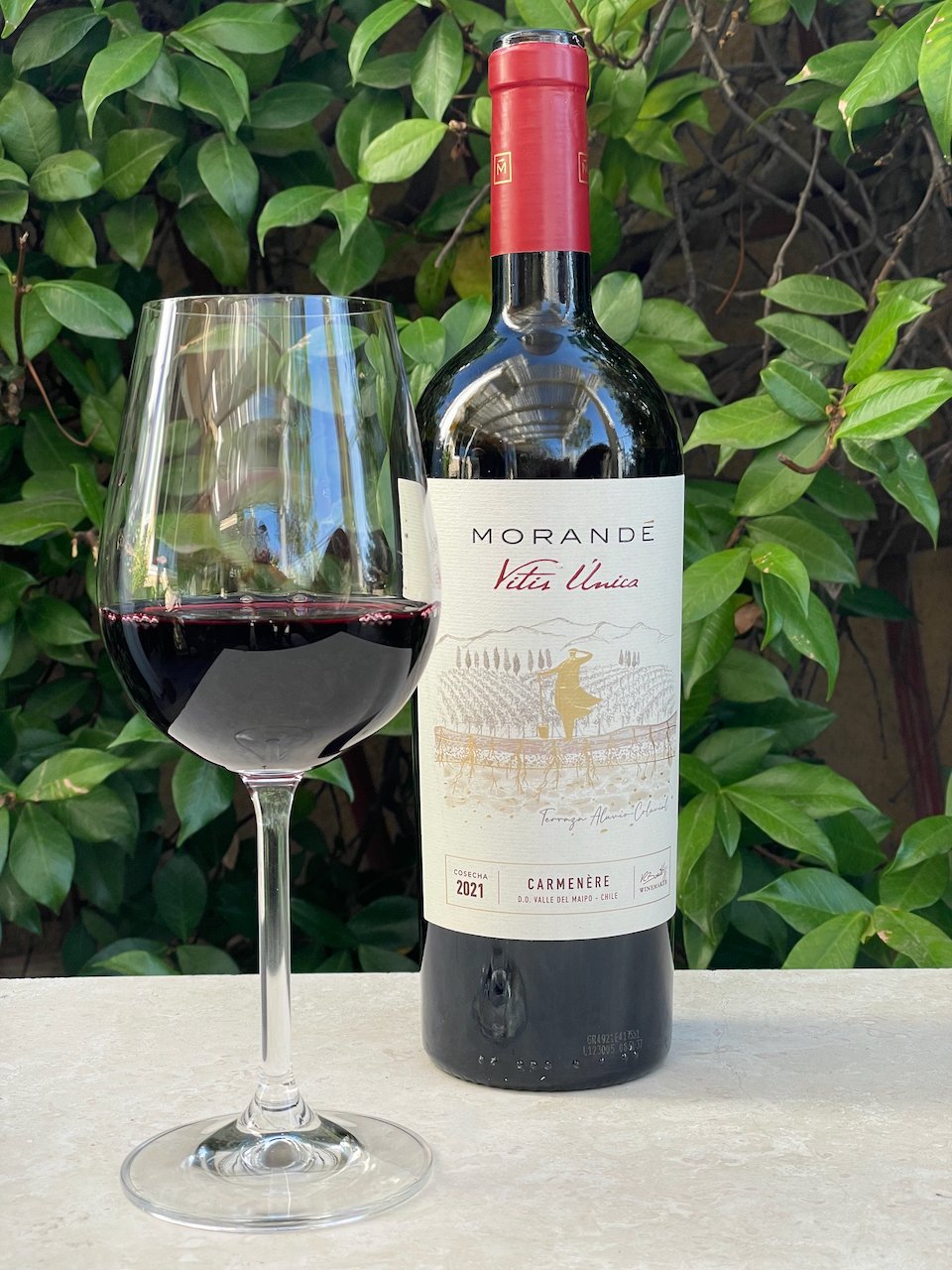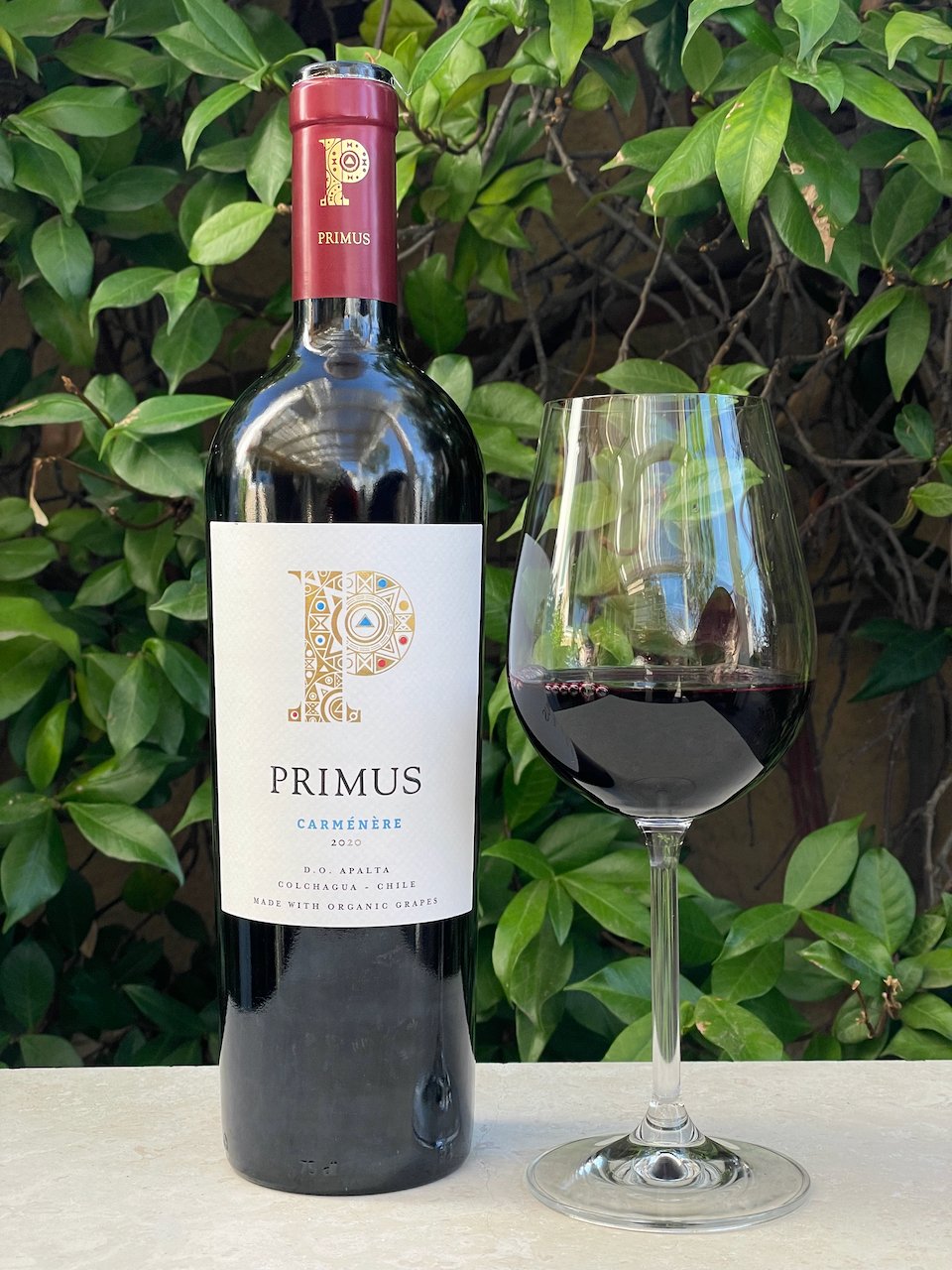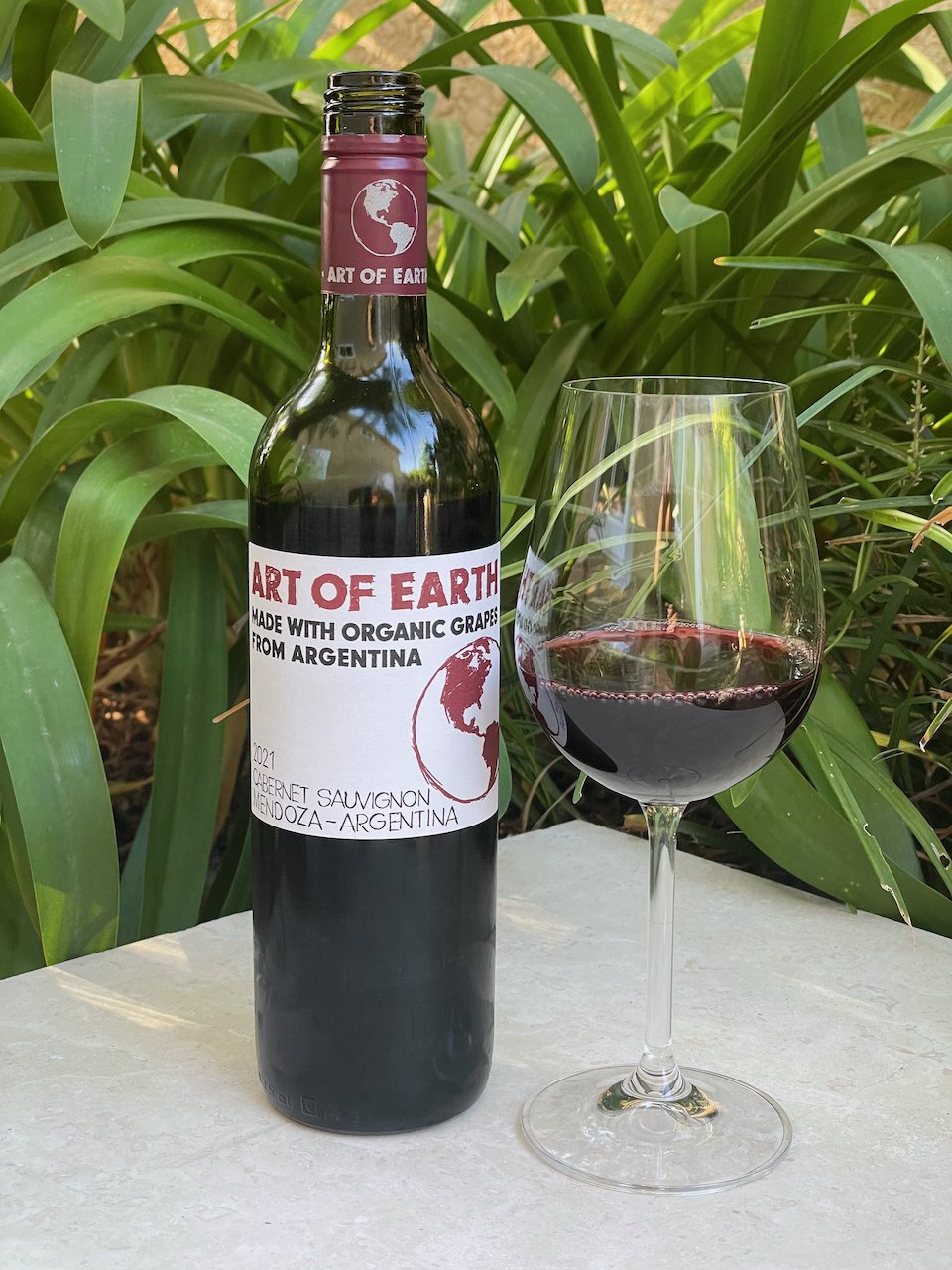Carménère (kar-men-nair) is a wine grape whose name is derived from the French carmin (meaning crimson). It was a grape that was thought to be nearly extinct. In 1994, fewer than 25 acres of Carménère remained in France’s Médoc, Bordeaux. But that all changed when it was discovered that an estimated one-third of what had been thought in Chile to be Merlot was actually Carménère. Carménère rose from near worldwide oblivion following the phylloxera crisis that had swept through the Médoc to now representing a country on the global stage: Carménère became synonymous with Chile.
Here are two more very nice Carménère wines from Chile…
2021 Morandé Vitis Unica Carménère ($20)
The grapes for this wine come from the San Bernardo estate, located in the Maipo Valley, Chile, and are planted on the north side of the river in a bed of pure gravel. This 100% Carménère was hand harvested, fermented in stainless steel tanks and aged in 80% French oak foundres and 20% new French oak barrels before being store for around 16 months.
This wine is medium purple in color with subtle aromas of red and black fruit along with a bit of pepper. On the palate, this medium-full bodied Carménère has fresh flavors of black cherry, medium tannin and an easy finish.
(13.5% ABV, Total Acidity = 3.59 g/L, pH=3.42, Residual Sugar=2.74 g/L)
2020 Primus Carménère ($20)
The grapes for this wine come comes from Apalta in Colchagua Chile. It is made with organic grapes that are grown in granite-and clay-rich soils. The vineyards are surrounded by native forests, where the Andes and Coastal mountain ranges meet. The wine was aged for 12 months in French oak barrels, 18% of which were new. It is deep purple in color with aromas of black cherry and black plum with subtle herbal notes. On the palate it displays rich dark fruit flavors along with some pepper and herbs. It has medium tannin, balanced acidity and a long finish.
(14.5% ABV, Total Acidity=4.94 g/L, pH=3.77, Residual Sugar=2.2 g/L)
(Imported by Gonzalez Byass)
Both of these lovely Carménère wines benefited by 30-60 minutes in a decanter. Again, Chile is producing very nice Carménère wines at great values that fit the mold as this week’s Behind the Cork™ Wines of the Week. Cheers!
Disclosure of Wine Sample Submission: I received these samples at no cost for review. The opinions expressed are entirely my own.
Media Samples Provided by Morandé Wines and Primus Wines








